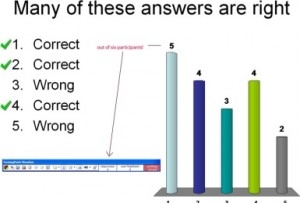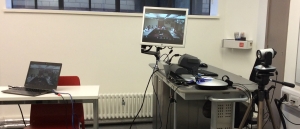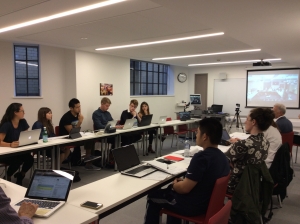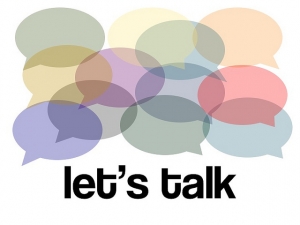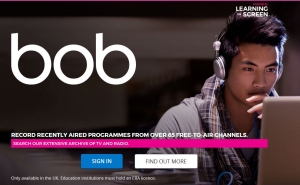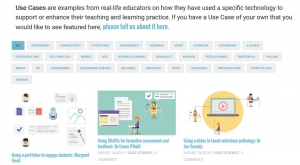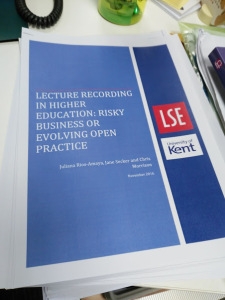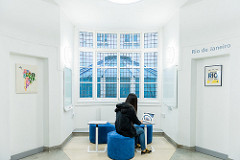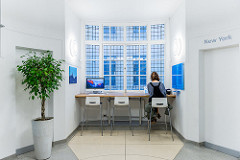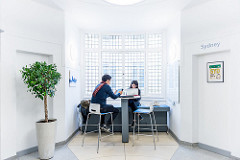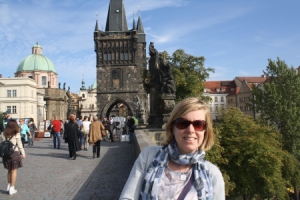Reflections from an EDx course
I recently undertook a Mooc (Massive Open Online Course) hosted by EDx and accredited by MIT on the Implementation and Evaluation of Educational Technology. Although I was very much a lurker rather than an active participant on the course (one of the main criticisms of Mooc’s), I did find some of the resources useful, particularly the video interviews with individuals mentioned in this blog post. More importantly it made me reflect on the processes that we carry out here in LTI when evaluating and piloting the use of educational technology.
As learning technologists we constantly test out, explore and critically evaluate educational technology but perhaps we don’t always communicate the specifics of this activity to colleagues. Different tools have various benefits and constraints which must be taken into consideration including; the scalability, accessibility, associated pedagogy and use, data privacy and storage issues, costs and potential training or support required. The same tool will have different considerations in different contexts and as technology is always changing and updating this is an ongoing process. It is also vital to remember that Educational technology does not operate in a vacuum see Tim Monreal’s article which calls for critical digital pedagogical approach.
Pedagogy is always fundamental to the process, (hence the Learning in LTI). When LTI are contacted by a department or individual with a request for a new technology or tool the question we always ask is ‘what are you trying to do with this tool?’. What are your learning goals and then we can look into the possible technology and pedagogy to support them.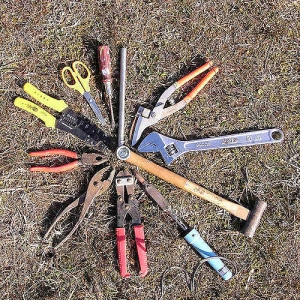
One of the key readings on the implementation of ed technology section of the MOOC was Jennifer Groff’s (Groff, 2008) work on developing a framework to identify different barriers to using technology or innovation in the classroom. Groff points out you can’t just pick a technology and expect the learning environment to change. Work has to be put into ensuring that staff and students are supported in the use of technology and the teaching and assessment methods suit the learning outcomes. This resonated with me as I have experienced projects where time poor academics have added the technology but not changed their teaching leading to disappointing results.
Groff identified that lack of innovation (introducing new curricula, new types of assessment or new pedagogy) in education can be due to multiple factors including the structural policies and practices of learning environments, school culture, personal beliefs and attitudes, students expectations and beliefs about learning and teaching and lack of research or the suitability of technology. Although these barriers can be extremely frustrating being aware of them is half the battle. LTI are currently working on various projects to listen to the various stakeholders involved in education in order explore possibilities for the future including:
2020Vision; involved speaking to LSE students about their current experience of technology in education and what they would like to see going forward.
SADL; project to work with students to better understand their existing digital and information literacies, share good practice and develop peer support.
NetworkED; seminar series invites speakers from education, computing and related fields to discuss how technology is shaping the world of education.
SparkGrants: provide an opportunity for Academic departments to gain funding and work in collaboration with LTI on projects that innovate teaching and learning.
In a short video interview as part of the course the Executive Director of MIT Justin Reich pointed out that often professional development is just as important as the technology itself and this is something that everyone here in LTI is very much aware of. Although we have always provided research and training around using educational technology we are now investigating ways to further embed training into projects and how to better communicate the necessity of devoting time not only to learn the practicalities of how to use particular technology but how to use it well in an educational context. This usually requires taking time to change teaching and learning practices so they embed the technology. As a team we work with small scale projects to try out new approaches to teaching, learning, assessment and feedback. Taking part in and evaluating each project allows us to find the tools and teaching methods that can be scaled up and applied to other areas.
Those colleagues that work with us here in LTI are often innovators who should be celebrated and praised for leading the way for others. Integrating change to enhance the student experience, involves renewing your teaching practice, requires dedication and is courageous. The very nature of technology is that it is constantly changing and it does fail. As learning technologists we do not know how to use all the tools that are out there and can’t be expected to, what we can do and what we can try and teach others (staff and students), is to learn and adapt as you go. To realise that it is about developing your own digital literacy so that you have the confidence to give things a go, to try things out and not be afraid to fail. Innovation and change gets messy (loud and chaotic) and can be hard work (technology may need adapting and usually requires more planning particularly when trialling new things) but the reward is that everyone involved is learning from the process, even more so if you involve your students and enable them to be part of the dialogue.
Successful implementation of educational technology is not only down to the personal development of staff but also students Dr Halverson, Professor of Educational Leadership and Policy Analysis at the University of Wisconsin Madison was a talking head on the Mooc who raised the issue of the ‘digital divide’. Dr Halverson argued that rather than discouraging the use of technology in classes we should be educating students to take advantage of the technology they have and use it to amplify their academic experience, to explore and use tools to create their own shared learning environments.
Finally course contributor Jeff Mao, (currently at Common sense Media, previously Policy Director of the Maine Learning Technology Initiative) pointed out that when you are considering implementing technology there is no point reinventing the wheel. If you are going to use technology it should do more than substitute your current practice, while it is often useful to digitise processes, technology allows you to redefine and do things you couldn’t do before. This is an important point and I think that staff and students are only just starting to explore the new possibilities for teaching and learning. Technology enables students to connect with each other but to connect with their community. It provides the opportunity to build things and make things within your institution but also with collaborators around the world providing the social context of learning. While the beauty of creating online resources is that they can be built on year on year and shared with the wider world. For example asking students to write a 1,500 word private blog post that is only read and marked by the teacher is not that far removed from asking students to write an essay. But if students are asked to publish a 500 word blog post which includes; linking to and commenting on a relevant news article or resource, reading two other students blog posts and adding comments and feedback to their peers work then the assessment and learning that is taking place is significantly different.
As my first experience of participating in a MOOC my overall impressions were mixed. Although I did engage with the material and ideas presented in the course I did not carry out the assessments as I felt that the activities were aimed more at those working in schools rather than higher education. I also found that there was a US bias to the discussions. However both these factors highlighted that despite the differences some of the big issues surrounding the implementation and evaluation of educational technology are common throughout the education sector.
References
Course content from EDx MITx: 11.133x_2 Implementation and Evaluation of Educational Technology including video interviews with Jennifer Groff, Justin Reich, Jess Mao and Dr Halverson.
Groff, Jennifer, and Chrystalla Mouza. 2008. “A Framework for Addressing Challenges to Classroom Technology Use.” AACE Journal 16 (1): 21-46.
Monreal, Tim 2016, ‘Beyond Surface-Level Digital Pedagogy’ published on Hybrid Pedagogy 23 August 216
Beyond Surface-Level Digital Pedagogy

